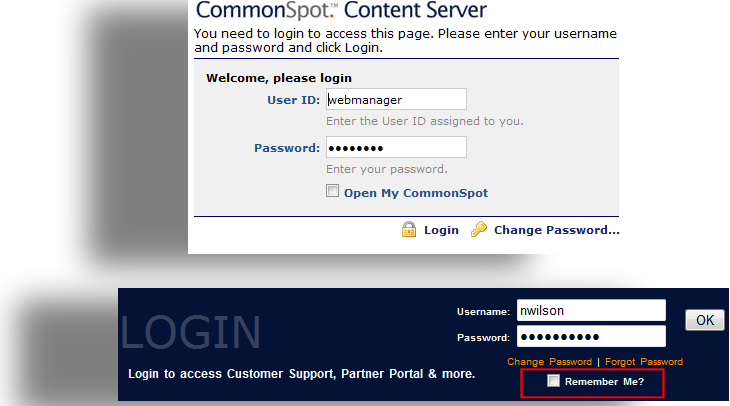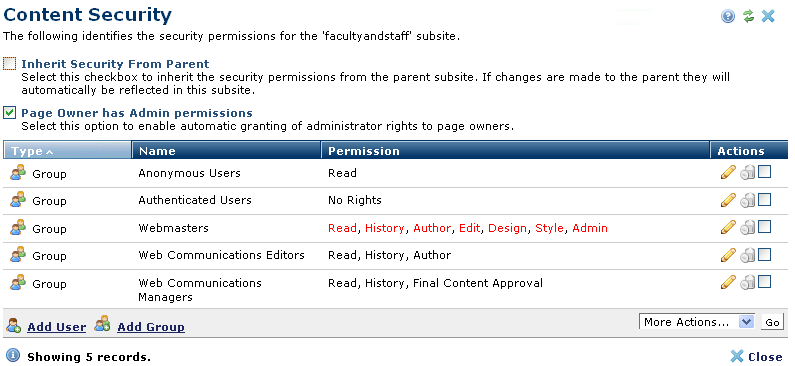CommonSpot's robust security framework is designed to let your organization control access and manage authentication your way. The framework includes flexible options to support CommonSpot-managed user passwords, cookie-based authentication for registered site visitors, custom authentication to integrate with any third-party authentication mechanism (LDAP, Active Directory, Kerberos, etc.), or any combination of the above.
CommonSpot uses both a distributed and centrally controlled security model: General security permissions apply to users and groups for activity-based privileges such as site administration, content creation, image and multimedia publishing, and more, while content security controls read, author, edit, design, and approve rights. Anyone with administrative rights can set and change permissions. The net effect is a highly flexible and granular structure that protects content assets while reducing bottlenecks.
- Leverage CommonSpot’s highly secure password encryption to authenticate users.
- Enable browser-based cookie authentication to automatically log in returning registered users, or use cookies to drive display of relevant content.
- Integrate as much or as little user and group information as you need when interfacing with third-party directories.
- Set granular general security permissions for individuals and groups at the server, site, or subsite level.
- Set user and group rights to read, author, edit, design, approve, administer, and more at the subsite, page, template, and content object level.
- Enable or disable security inheritance.
- Programmatically customize security: Use your own authentication mechanism, add fields to the CommonSpot
login, create a custom login page or your own login form, and more.
Related Solutions
Screen Shots
Out-of-the-box login functionality includes robust password encryption. Sites can easily customize look and feel, enable cookie-based authentication for returning site users, or authenticate against an external source.

Anyone with administration rights can manage rights to content. You can enable automatic inheritance or explicitly assign rights.

You can assign authenticated users highly granular, activity-based general security permissions at the server, site and subsite level to protect content while reducing bottlenecks.
